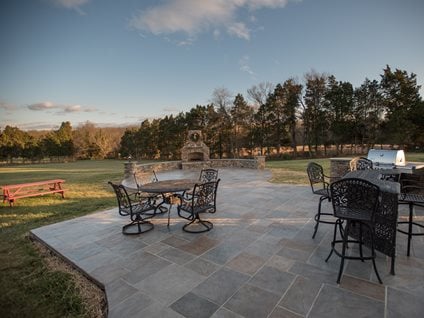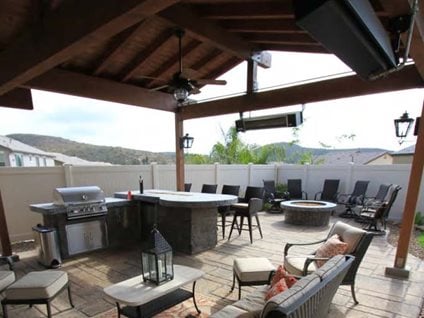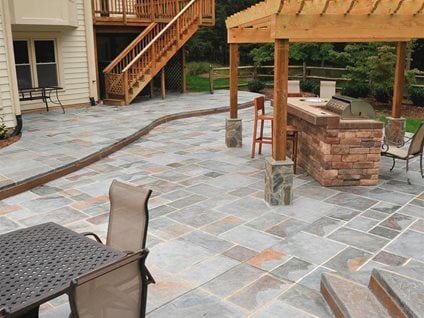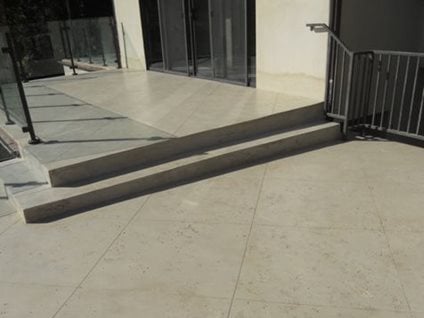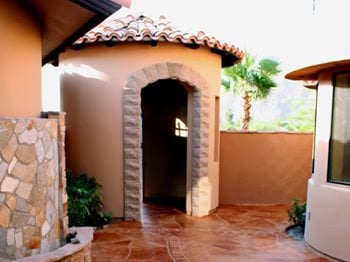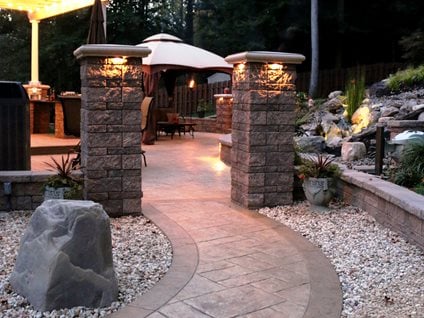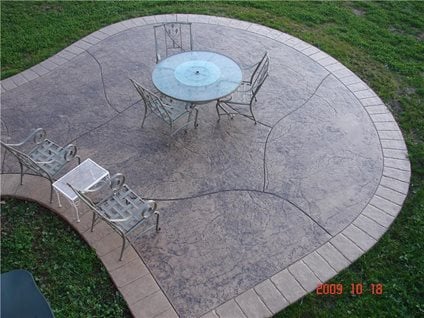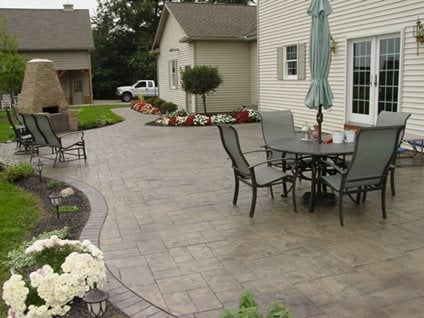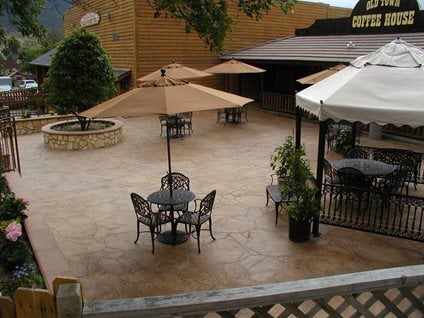Faux stone patio project examples:
Stamped Concrete Patio Replicates Bluestone
The 900-square-foot stamped concrete patio was designed to have a separate eating area and separate sitting area near the fireplace to accommodate guests. Salzano used a traditional ashlar slate pattern, and replicated bluestone’s natural color variations using a custom-blended color hardener mix.
Reproducing Travertine
The 900-square-foot stamped concrete patio was designed to have a separate eating area and separate sitting area near the fireplace to accommodate guests. Salzano used a traditional ashlar slate pattern, and replicated bluestone’s natural color variations using a custom-blended color hardener mix.
Creating the Look of Multicolored Slate
These homeowners wanted the look of a natural slate patio, but didn't want to pay the high price. They were able to achieve the same upscale appearance for about half the cost using concrete. The look was created using an Old English Slate pattern and variegated color accents to replicate those found in natural slate. Even the faux grout lines, colored a tan shade, look authentic.
Faux Limestone Overlay Matches Existing Pool Deck
These homeowners wanted to replace a failing stone balcony with something that would match their limestone pool deck below. The solution was to use a lightweight cement-based overlay integrally colored a light cream shade to look like natural limestone. Diamond tools were then used to hand cut a linear pattern in the overlay to mimic cut stone.
Decorative Sawcuts and Staining Mimic Hand-Laid Stone
This stunning patio was created by applying a cement-based overlay to existing concrete, using a trowel to achieve a stonelike texture. The overlay was then sawcut into organic shapes to mimic natural hand-laid stone. To create the rich colors and faux grout lines, the concrete was hand colored in three different shades of water-based stain. Tape was used as a stencil for the grout lines.
Stone Pattern Extends to Walkways, Walls and Columns
Why stop the stone effect at the patio? This outdoor living space features faux stone throughout, creating a cohesive look that extends to various outdoor “rooms.” It includes two separate stamped concrete patios connected by a stamped walkway, all featuring the same ashlar slate pattern. In addition, the columns and retaining walls were built with stone-look concrete pavers.
Faux Stone Looks for Small Patios
Here are three small patios (around 1,000 square feet or less) that mimic natural stone yet have very distinct looks through the use of different shapes, patterns, and coloring techniques. They also are very budget friendly, averaging about $10 per square foot.
Adding a Border for Impact
Surrounding a faux stone concrete patio with a border in a contrasting pattern is an effective way to create more drama and impact. Get this look using an ashlar slate pattern for the main patio and a brick pattern for the border.
Stampable Faux-Stone Overlays
Overlays stamped with a stone pattern are a great solution for existing concrete patios. Thicker-build overlays (1/4 inch or greater) work well for these applications and can be used with most stamp patterns and texturing skins.
